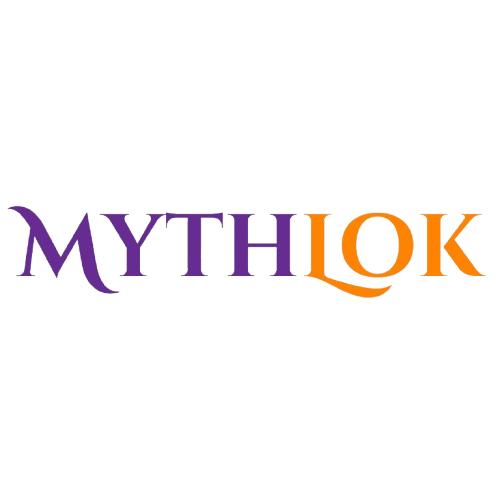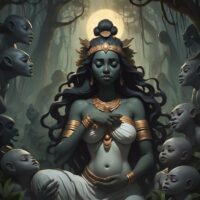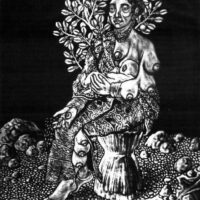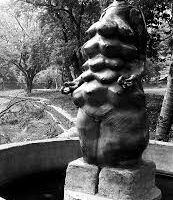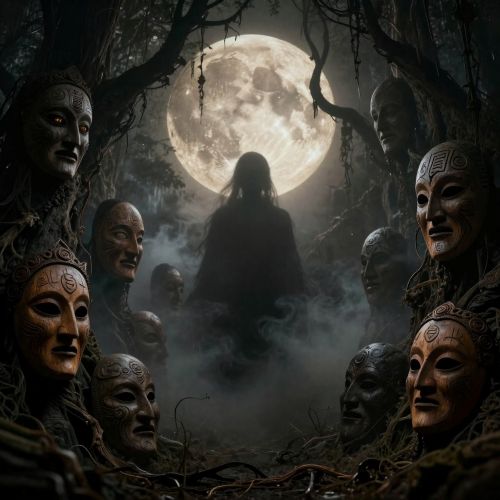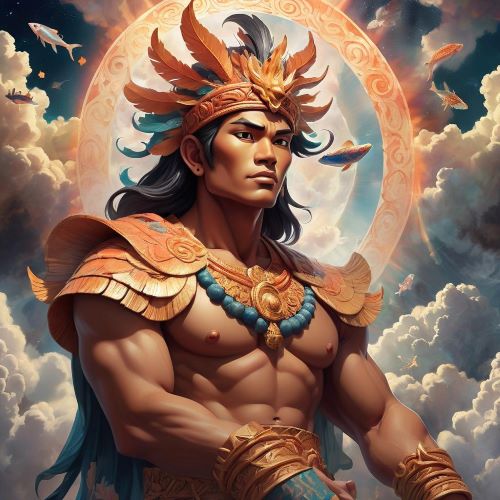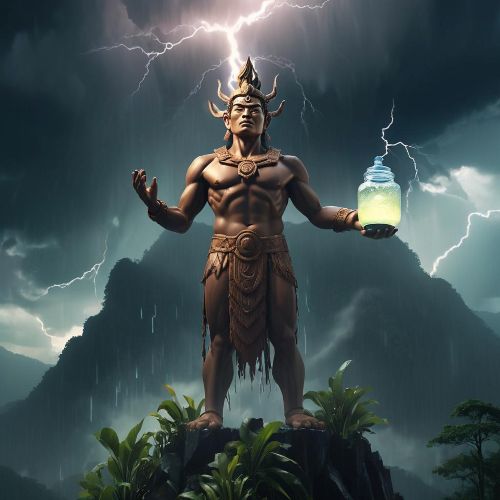Mebuyan : Goddess of the Underworld
Listen
At a glance
| Description | |
|---|---|
| Origin | Philippine Mythology |
| Classification | Gods |
| Family Members | N/A |
| Region | Philippines |
| Associated With | Underworld, Deceased children |
Mebuyan
Introduction
Mebuyan, also called Maibuyan, is the goddess of the underworld in Bagobo and Manobo mythology. She rules Banua Mebuyan, a realm beneath the earth where she nurtures the souls of deceased infants. Unlike her brother Lumabat, the God of the Sky, she chose the underworld over ascension to the heavens. Originally known as Tube’ ka Lumabat, or “sister of Lumabat,” Mebuyan plays a vital role in guiding spirits and overseeing the transition from immortality to mortality. Her story reflects the deep cultural beliefs of the Bagobo people, offering insight into their views on life, death, and the afterlife.
Physical Traits
Mebuyan is a striking and unconventional figure in Bagobo mythology, recognized for her nurturing role in the afterlife. She is often depicted with a body covered in breasts, a unique feature that signifies her duty to nourish the souls of deceased infants. While some portray her as beautiful and pregnant, others describe her as grotesque, reflecting the complexity of her character. Regardless of interpretation, her physical form remains a powerful symbol of motherhood and care, emphasizing her role as a guardian of young spirits in the underworld.
Family
Mebuyan’s role in Bagobo mythology is deeply tied to her relationship with Lumabat, her brother and counterpart in the celestial realm. While Lumabat ascended to the sky, Mebuyan chose to create her own domain beneath the earth, emphasizing the contrast between their paths. Some traditions trace her lineage to Tuglay and Tuglibon, further embedding her within Bagobo ancestral beliefs. Her choice to rule the underworld reflects her independence and the balance between life, death, and the afterlife in Bagobo cosmology.
Other names
Mebuyan is known by multiple names, each reflecting a different aspect of her identity. She is sometimes called Maibuyan or Mebu’yan, while the title Tube’ ka Lumabat, meaning “sister of Lumabat,” connects her to her celestial sibling. Her domain, Banua Mebuyan, is also named after her, reinforcing her deep association with the underworld. These variations in name highlight the evolving nature of oral tradition, where deities are understood through different cultural lenses and storytelling adaptations.
Powers and Abilities
Mebuyan wields significant influence over the afterlife, particularly in guiding the souls of deceased infants. Her nurturing power allows her to sustain these spirits with the milk from her many breasts until they are ready to move on. Beyond caregiving, she also governs the cycle of life and death. By shaking the calamansi tree, she determines who will die—ripe fruit signals the passing of an elder, while unripe fruit foretells the death of the young. Her underworld domain, Banua Mebuyan, serves as a necessary stop for all souls, where they undergo purification before continuing to Gimokudan. Through these abilities, Mebuyan ensures balance between the living and the dead, cementing her role as a powerful force in Bagobo mythology.
Modern Day Influence
Mebuyan’s legacy continues to thrive in contemporary art, literature, and cultural discourse. Artists like Leeroy New reinterpret her mythology, as seen in Mebuyan’s Colony, an immersive installation blending mythology with environmental themes. This work, exhibited at the Cultural Center of the Philippines, highlights the goddess’s nurturing essence while critiquing patriarchal exploitation of nature.
Beyond visual art, Mebuyan’s presence endures in literature, where authors weave her story into discussions on motherhood, transition, and the afterlife. Cultural festivals also celebrate her, ensuring that her myth remains a vibrant part of Philippine heritage. Her continued influence underscores the lasting power of pre-colonial narratives and their relevance in today’s conversations on identity, ecology, and care.
Related Images
Source
Clark, Jordan. Mebuyan, Mother of the Underworld: BAGOBO BELIEFS.” The Aswang Project, 21 Nov. 2018. .
Raats, Pieter Jan. “A Structural Study of Bagobo Myths and Rites.” University of San Carlos, 1969.
“Mebuyan | Facts, Information, and Mythology.” Encyclopedia Mythica. .
“Mebuyan, Mother of the Underworld: BAGOBO BELIEFS.” Puerto Parrot. .
Frequently Asked Questions
What is lorem Ipsum?
I am text block. Click edit button to change this text. Lorem ipsum dolor sit amet, consectetur adipiscing elit. Ut elit tellus, luctus nec ullamcorper mattis, pulvinar dapibus leo.
What is lorem Ipsum?
I am text block. Click edit button to change this text. Lorem ipsum dolor sit amet, consectetur adipiscing elit. Ut elit tellus, luctus nec ullamcorper mattis, pulvinar dapibus leo.
What is lorem Ipsum?
I am text block. Click edit button to change this text. Lorem ipsum dolor sit amet, consectetur adipiscing elit. Ut elit tellus, luctus nec ullamcorper mattis, pulvinar dapibus leo.
What is lorem Ipsum?
I am text block. Click edit button to change this text. Lorem ipsum dolor sit amet, consectetur adipiscing elit. Ut elit tellus, luctus nec ullamcorper mattis, pulvinar dapibus leo.
What is lorem Ipsum?
I am text block. Click edit button to change this text. Lorem ipsum dolor sit amet, consectetur adipiscing elit. Ut elit tellus, luctus nec ullamcorper mattis, pulvinar dapibus leo.

